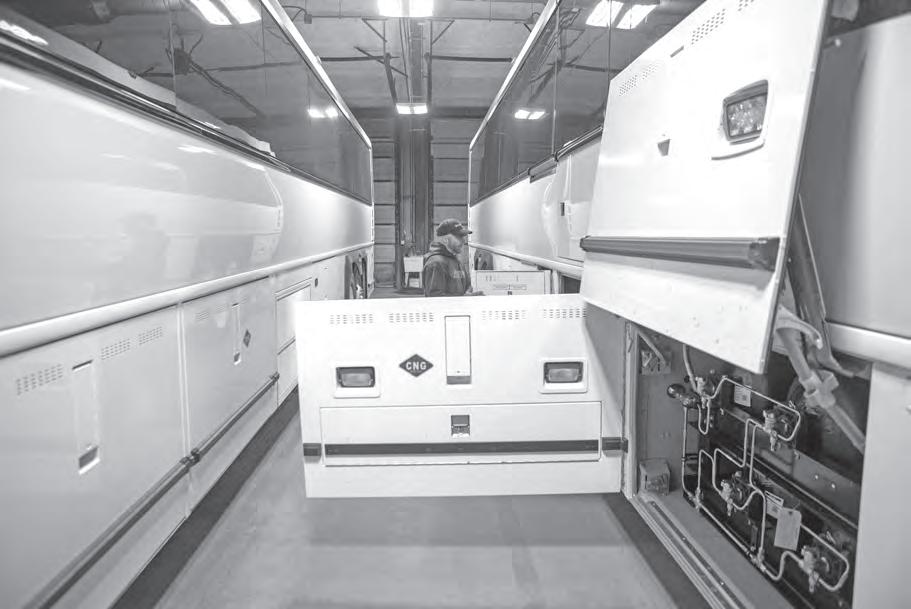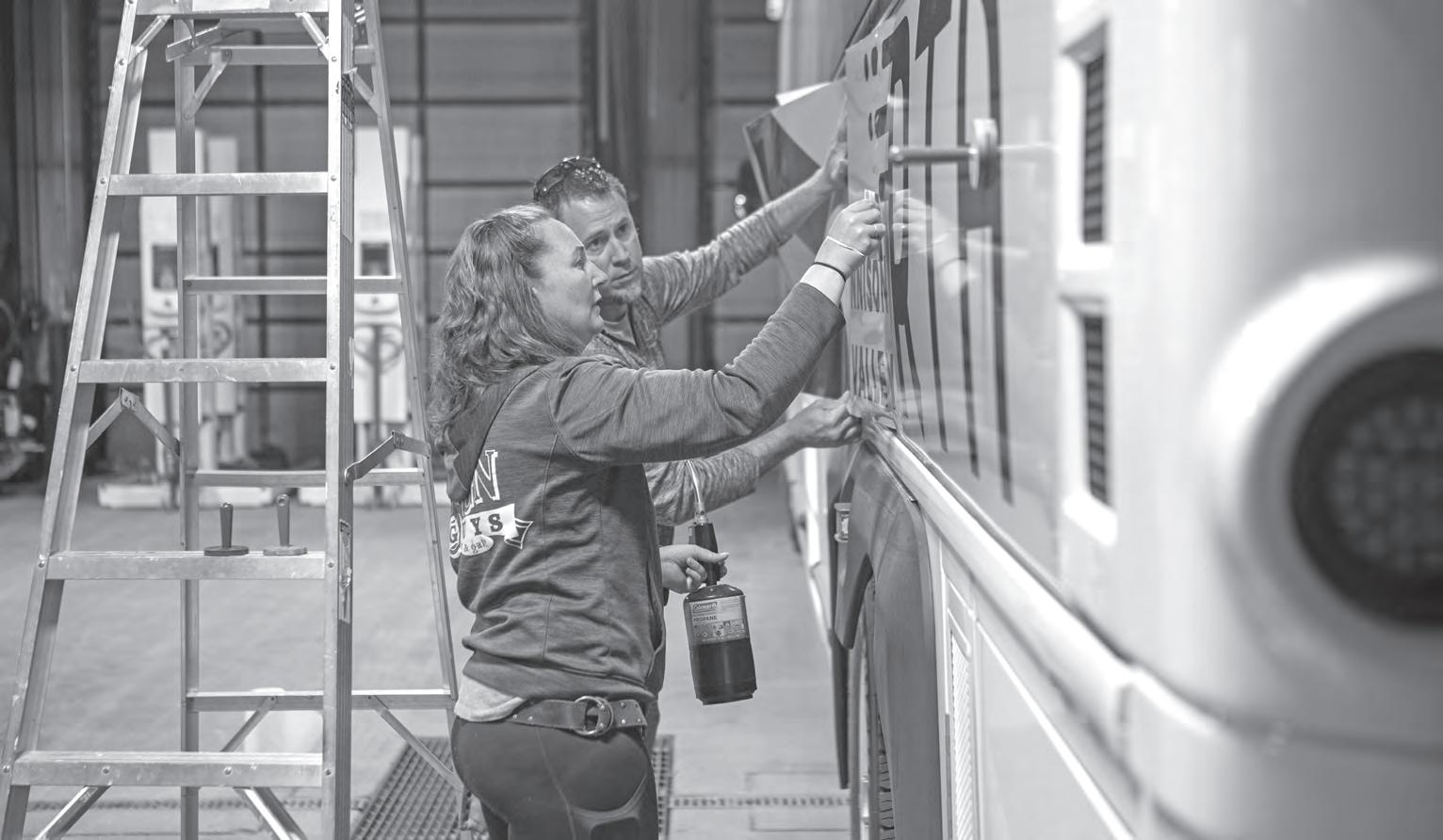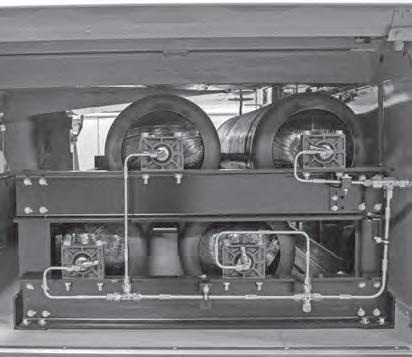
3 minute read
RTA continues its transition to cleaner energy
80% of fleet runs on recaptured CNG
Bella Biondini Times Editor
As bus ridership grows, the Rural Transportation Authority (RTA) has continued its shift to a more environmentally-friendly type of fuel, with the goal of reducing valley-wide emissions.

The RTA’s fuel of choice has been compressed natural gas (CNG), which is essentially recaptured methane. The Authority purchases renewable or “recaptured” CNG credits so the gas it uses is pulled from landfills, wastewater treatment plants and food and animal waste.
“We get methane that would have been otherwise vented out in the atmosphere,” said RTA Executive Director Scott Truex.
This month, the RTA added two more CNG buses to its fleet, 80% of which now runs on the eco-friendly alternative to gasoline and diesel. With the new arrivals, the Authority operates a total of 10 vehicles: two diesel and eight CNG. The RTA estimates that the CNG buses put out about 12% less carbon dioxide per mile and 97% less particle pollution than diesel. With buses that drive hundreds of thousands of miles each year and fuel that costs less, the savings quickly add up.
Natural gas is still best choice for buses
The community’s push to begin lowering emissions in the valley started nearly a decade ago following the Gunnison County Commissioners’ desire to study the efficacy of alternative fuels. The board examined electric and biodiesel, but eventually landed on CNG — a fuel that county leaders believed would lower emissions and fit easily into existing operations.
To make the transition, Gunnison County needed to build a fuel station, deemed a challenge due to the high cost of compressing gas to extremely high pressures. First the county needed to guarantee a private company that the construction of a station would be worth the investment. The board eventually looked to the RTA for help, drawing inspiration from the Roaring Fork Transit Authority, which had already begun using CNG.
The CNG station, located at Gunnison Tire, went online in 2016, and the RTA started with one bus a year later. Under a twoway agreement, a promise to purchase a minimum amount of fuel resulted in costs that were far lower at the pump. In 2022, the county paid a little more than $2 per gallon equivalent when diesel prices reached almost $5.
Over the years, electricity has become cleaner and may eventually be preferable to other energy types, said John Cattles, assistant county manager for operations and sustainability. But that doesn’t mean going electric is the most feasible option for the valley’s bus system.
“Right now, natural gas is still our best choice … We don't make these decisions, like natural gas is bad, and electricity is good,” Cattles said. “We try to make these decisions based on their use case. For homes, electricity is really good. For vehicles, it depends.”
The RTA system runs all of its buses to a maximum, which means when the bus runs out of fuel, they refill, change drivers and keep going, Cattles said. With today’s technology, electric buses don’t have the range the RTA needs to run its 36 daily routes. If the buses were all electric, the RTA would likely need to park them for eight hours or more to charge — frequently putting them out of service, he said.

“That would really change how much equipment they would have to own to be able to maintain the service levels we have,” he said. “And If it takes 50% more buses if they're electric, there's an environmental impact to that.”
The county now uses more than 30 CNG vehicles. Cattles said he thinks the shift to CNG is just the first step in what the county does with alternative fuels and foresees a transition to electric vehicles in the future. The county has already begun to order some electric trucks
But with the goal of reducing emissions, significant progress has already been made, he said.
“The way I think of it is, if we had just kept going with diesel and waited for electric to get to a point where we could convert a lot of vehicles, we would just be starting right now to try and save on our emissions … Now we're starting to see that electric is kind of our next step. But we didn't just sit there twiddling our thumbs,” Cattles said.










